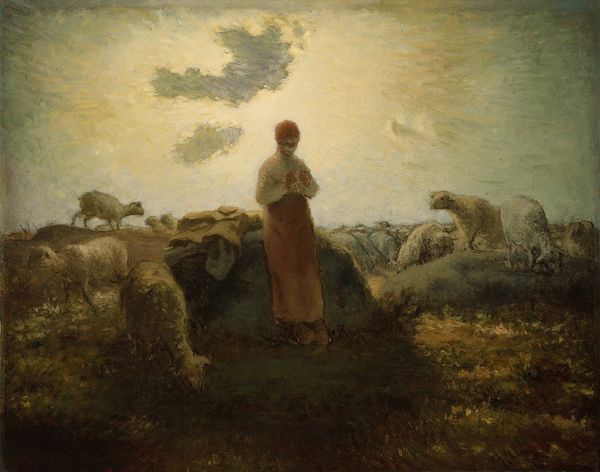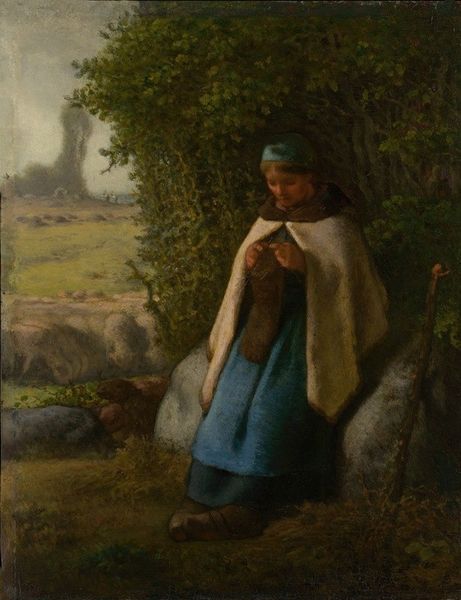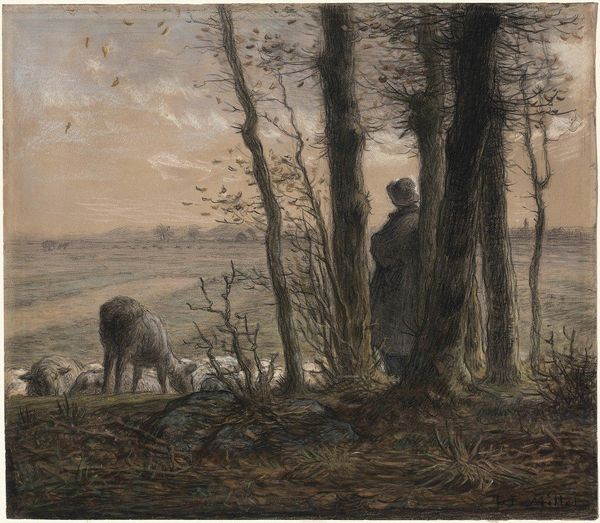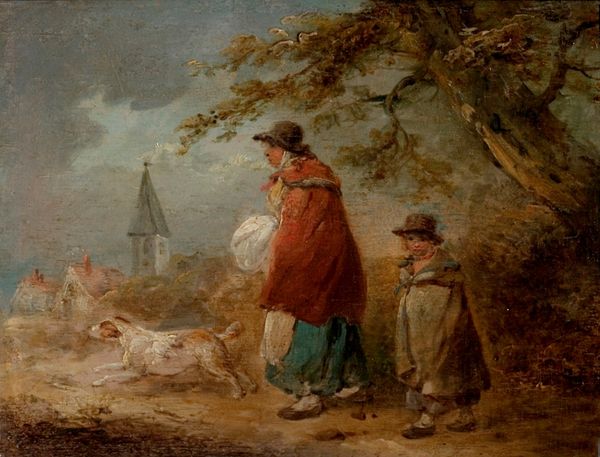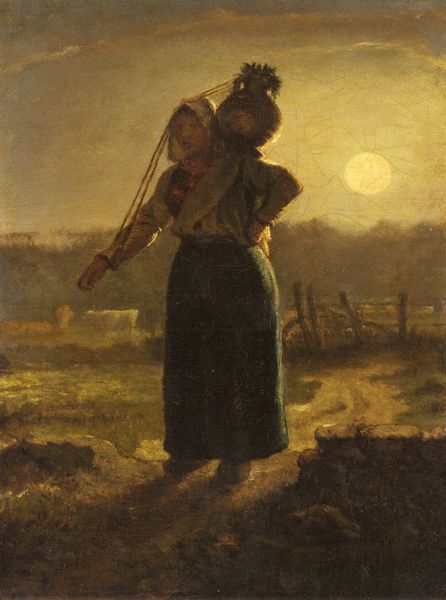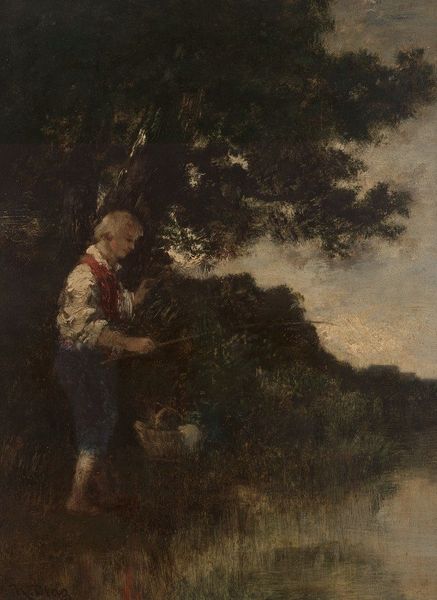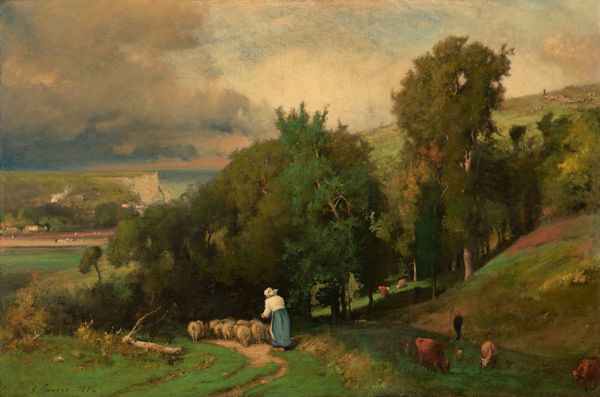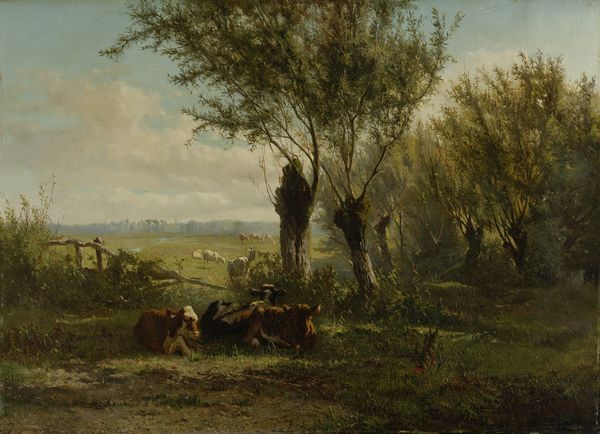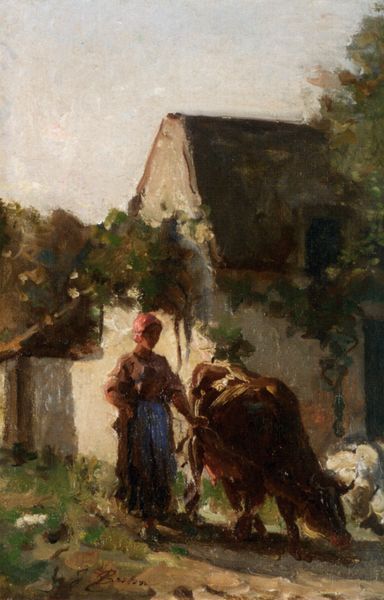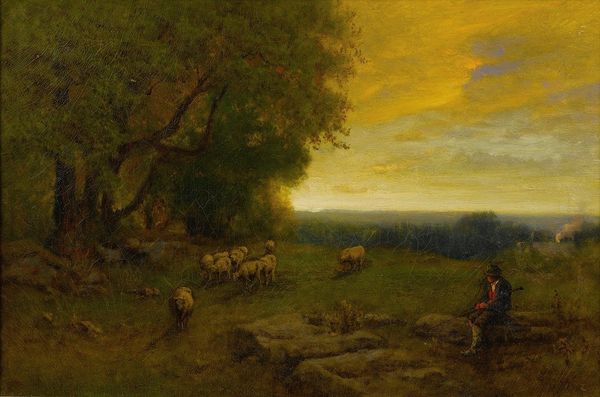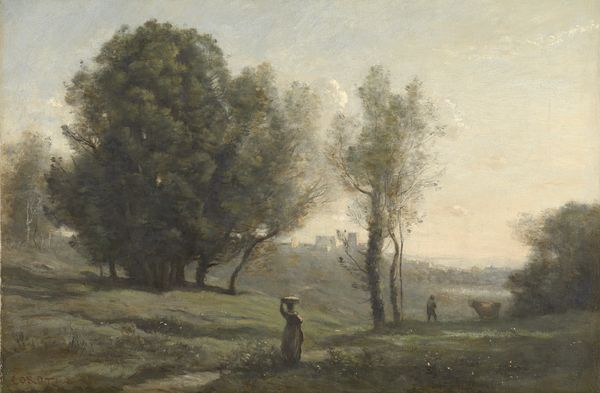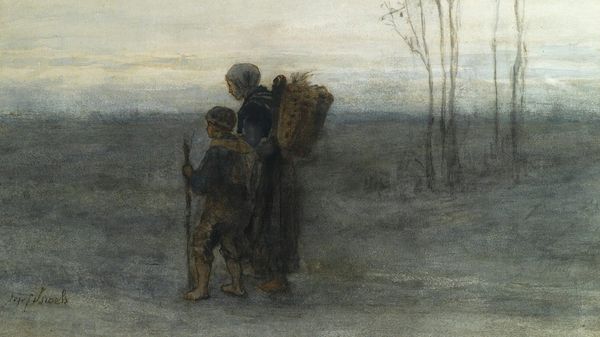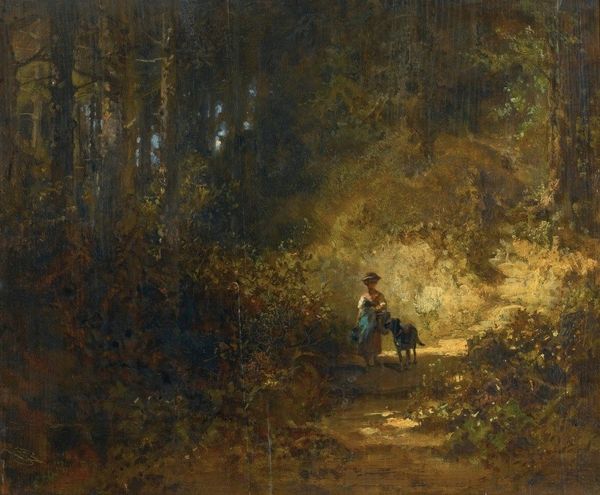
Copyright: Public Domain: Artvee
Editor: Here we have Jean-François Millet's "The Little Shepherdess," painted between 1868 and 1872, rendered in oil paint. The subdued color palette makes me feel a deep sense of tranquility, yet the solitary figure also hints at the potential isolation of rural life. What do you see in this piece, particularly considering Millet's other works? Curator: That sense of isolation is key, I think. Millet’s work often romanticizes rural life, but it’s crucial to recognize that this romanticism occurred during a period of immense social upheaval, including the rise of industrialization and urbanization. “The Little Shepherdess” becomes more than a simple pastoral scene. Doesn't the shepherdess' averted gaze suggest more than just shyness? Could it also represent a disconnect, perhaps even a forced resignation to her role? The clothing looks tattered and simple too. What social narratives can we find at play here? Editor: That’s fascinating. I hadn't considered the social commentary embedded within what initially seemed like a simple representation. Considering the period, how might this work challenge or reinforce prevailing views of women and labor? Curator: Exactly! This image enters a dialogue about women's roles and their connection to labor, and in rural societies. Consider the social context: the rising socialist movements were questioning class structures. Millet, through pieces like this, presents the quiet dignity of rural workers while simultaneously highlighting their often-invisible labor. It acknowledges that even within the ‘idyllic’ countryside, social and gendered power dynamics are still at play. We should question if the shepherdess has power or autonomy, or how that might be influenced by industrialisation? Editor: That’s a powerful interpretation. I’m struck by how much context enriches the artwork. Curator: Precisely. Engaging with the social and historical narrative illuminates so much more. It prompts essential discussions about representation, class, and gender that continue to resonate today.
Comments
No comments
Be the first to comment and join the conversation on the ultimate creative platform.
